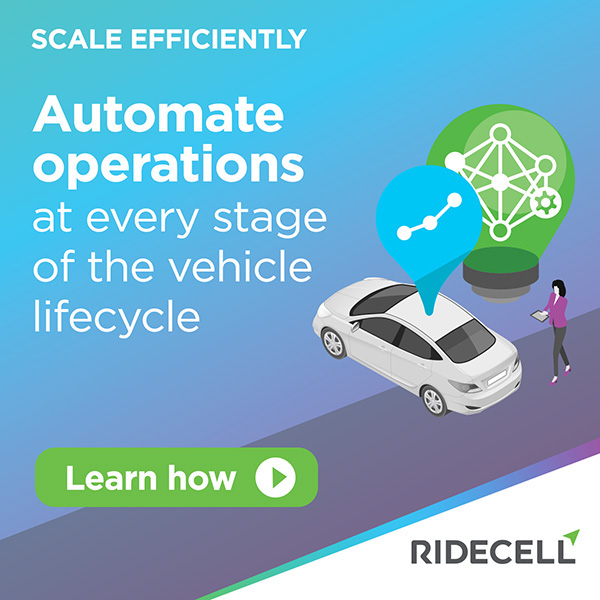
By Sumit Chauhan, Co-founder and COO, Cerebrum X
June 28, 2023
More vehicle fleets are leveraging Artificial Intelligence (AI), data analytics and sophisticated management technology in many areas of their fleet operations. One area in particular that is benefitting from these advanced data inputs and analytics is in the maintenance and servicing of each vehicle within the fleet. Having access to the right data can make a significant difference in overall fleet management and also impact the bottom line.
Predictive fleet maintenance with data-driven insights predicts equipment or vehicle failure. Fleet management is crucial to maintain cost efficiency, operations, and user safety. Leveraging fleet software helps in gaining vehicle data, analyzing it in a timely manner, and maximizing operational output. As fleet software sheds light on new areas that require optimization, data nonetheless plays an essential role in providing timely maintenance, safety and performance alerts among others.
Connected vehicle data, telematics, and embedded telematics help in collecting fleet data using different sources to get accurate user data while also taking proactive steps to maintain fleet efficiency.
What’s the Difference: Preventive vs Predictive vs Proactive Maintenance
The primary difference between preventive, predictive, and proactive maintenance is based on schedules. While preventive maintenance does not use current data, predictive and proactive maintenance leverage the existing state of the fleet and remedies to increase fleet management optimization.
 This distinction is important because managing a fleet of several or even hundreds of vehicles comes with its share of challenges for both the fleet managers and fleet service providers to stay on par with the administrative tasks involved. While these may not concern the core business activities, they take up too much time, shifting the focus from what matters most.
This distinction is important because managing a fleet of several or even hundreds of vehicles comes with its share of challenges for both the fleet managers and fleet service providers to stay on par with the administrative tasks involved. While these may not concern the core business activities, they take up too much time, shifting the focus from what matters most.
Fleet service providers spend close to a quarter of their time handling tasks like quoting, invoicing, dispatching and fleet maintenance. This may not seem like a big investment in time initially but can easily add up to divert attention from revenue-generating activities. This leads to businesses incurring high costs due to low productivity, missing out on service & repairs, and tackling day-to-day tasks with extreme difficulty.
Fleet telematics and service providers, when armed with powerful connected vehicle data and insights, can enable fleet managers to handle these areas more effectively.
Connected Vehicle Data Can Drive Fleets to Success
Real-time data accelerates analysis to identify factors influencing the fleet business, and to develop strategies that nurture growth. It allows fleet service providers to automate mundane tasks, such as monitoring assets, managing maintenance and warranty, scheduling service appointments and more. Data also helps tackle driver shortages, asset utilization and controlling unauthorized use of company assets, to keep fleets running on the road, healthy and profitable.
The importance of cloud connectivity
Today’s AI and data-intensive analytics require large amounts of data processing capabilities. To increase bandwidth efficiency and mitigate latency issues, it’s better to conduct critical data processing at the edge within the vehicle, and only share event-related information to the cloud. In-vehicle edge computing has become critical to ensure that connected vehicles can function at scale, due to the applications and data being closer to the source, providing quicker turnaround and drastically improving the system’s performance.
 Leveraging cloud-based platforms offer a wide range of applications across verticals where resulting insights can be consumed. The most obvious use case is for aftermarket and vehicle maintenance where effective algorithms can analyze the health of the vehicle in near real-time to suggest remedies for impending vehicle failures across vehicle assets like engine, oil, battery, tires and so on. Fleets leveraging this data can have maintenance teams ready to perform service on a vehicle that returns in a far more efficient manner since much of the diagnostic work has been performed in real time.
Leveraging cloud-based platforms offer a wide range of applications across verticals where resulting insights can be consumed. The most obvious use case is for aftermarket and vehicle maintenance where effective algorithms can analyze the health of the vehicle in near real-time to suggest remedies for impending vehicle failures across vehicle assets like engine, oil, battery, tires and so on. Fleets leveraging this data can have maintenance teams ready to perform service on a vehicle that returns in a far more efficient manner since much of the diagnostic work has been performed in real time.
What To Look for In the Right Data Platform & Software
Vehicle fleets have many considerations to keep in mind when choosing a predictive fleet maintenance software platform. Predictive fleet maintenance software uses automotive tools to perform regular fleet maintenance, preventing manual errors. Ideal providers must offer preventive maintenance schedules and alerts. The software sends periodic notifications and alerts to perform maintenance activities. It uses pre-set monitoring metrics and service records to send automated maintenance alerts and schedules.
It should also easily identify vehicle needs and maintenance risks. This detects critical situations and highlights areas that require immediate attention. It enables the capture of a range of performance data, analyzing driver behavior and checking the external surroundings to accurately store vehicle metrics and other variables, assisting in identifying risks.
The right platform and software can properly collect and organize data. The software helps to collect relevant data, define metrics and measure the overall impact on vehicle maintenance. Its intuitive dashboard organizes data through reports, visuals, and summaries to access and synchronize the information. It also helps in building better strategies and developing decisions.
The more datasets AI collects with OEM processing via the cloud, the better predictions it can make for vehicle fleets. This means safer, more intuitive automated vehicles in the future with more accurate routes and better real-time vehicle diagnostics.
 About The Author: Sumit Chauhan is co-founder and chief operating officer of Cerebrum X, with more than 24 years of experience in automotive, IoT, telecoms and healthcare. Sumit has always played the leadership role that allowed him to manage a P&L of close to US $ 0.5B across various organizations, such as Aricent, Nokia and Harman, enriching their domestic as well as international business verticals. As co-founder of CerebrumX, he has applied his experience in the connected vehicle data domain to deliver the automotive industry with an AI-powered augmented deep learning platform (ADLP). Sumit is also passionate about mentoring and guiding the next generation of entrepreneurs.
About The Author: Sumit Chauhan is co-founder and chief operating officer of Cerebrum X, with more than 24 years of experience in automotive, IoT, telecoms and healthcare. Sumit has always played the leadership role that allowed him to manage a P&L of close to US $ 0.5B across various organizations, such as Aricent, Nokia and Harman, enriching their domestic as well as international business verticals. As co-founder of CerebrumX, he has applied his experience in the connected vehicle data domain to deliver the automotive industry with an AI-powered augmented deep learning platform (ADLP). Sumit is also passionate about mentoring and guiding the next generation of entrepreneurs.



